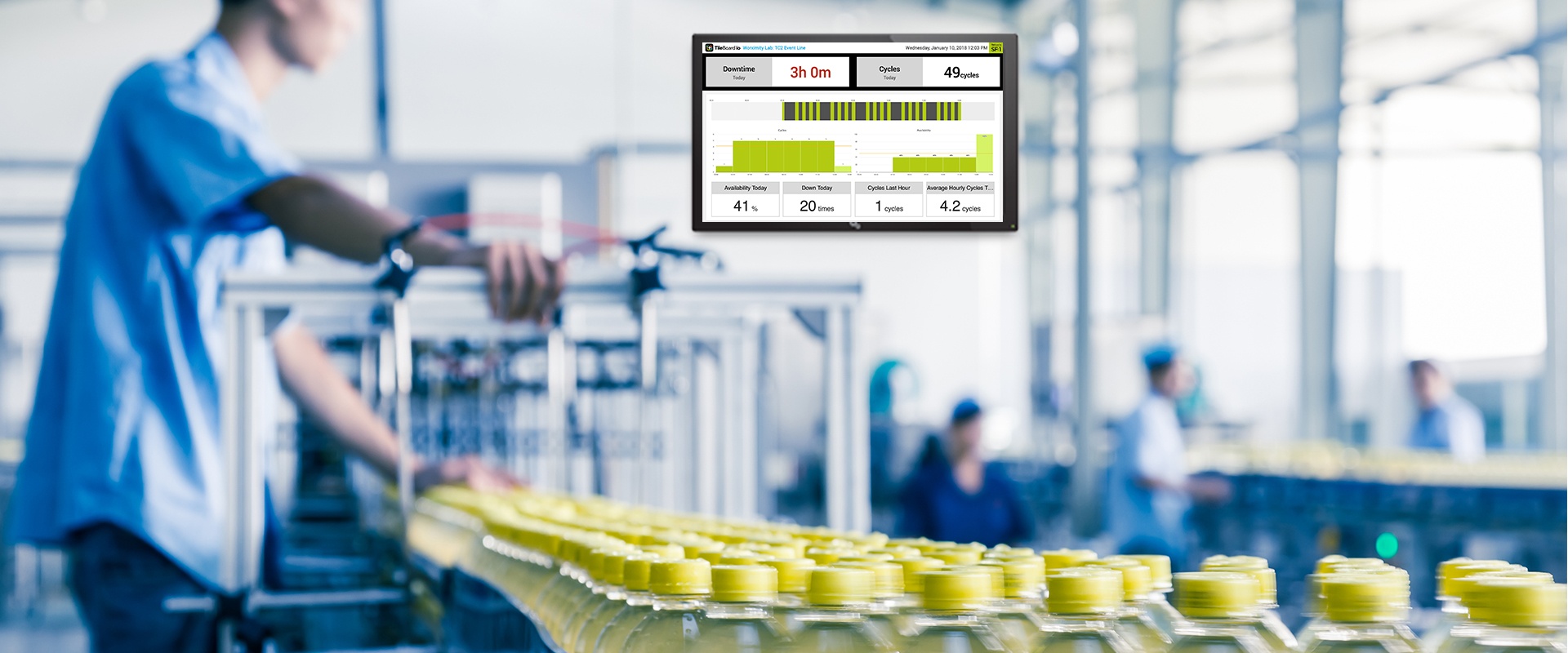Evidence of significant improvements in efficiency and productivity following the implementation of connected factory solutions is common, but what concretely happens? The answer is simple: a connected factory allows for many improvements throughout the production process, and these ultimately yield impressive results. Here is a summary of how to maximize these improvements in three steps.
Step 1 - Connection
Determine what you want to measure, and where you want to measure it to make your plant smart. Examine the manual or paper-based processes you use to collect data, as well as the KPIs you already use (for example, indicators for produced units, machine availability, downtime, etc.). Then, list the information you would like to have. Would it be difficult to collect this data using sensors? Often, a piece of information whose monitoring is extremely difficult to perform by a human being is simple to collect automatically by a device. Find the overlaps and gaps in the data you have and think about the data you want, and see if you can connect sensors to collect the data that will help you fix these gaps.
Step 2 - Measure
The amount of data collected by the sensors is considerable in the smart factory. Make sure your IT infrastructure has the capacity to store and protect it, and that it can also allow authorized access to your data or benefit from a secure cloud solution. Keeping everything locked and inaccessible is not really an option for manufacturers who wish to remain competitive. In addition, the availability and usefulness of tablets and smartphones make it no longer necessary to stay stuck on a desktop computer, whose main disadvantage is obviously to be fixed.
Implementing a secure mobile solution can have a big impact on productivity. Simply having access to up-to-date information, no matter where you are, changes everything. Managers can be physically where they are expected to be during strategic planning sessions without having to worry about something happening at the plant while they're away and ignoring it.
Knowing which KPIs vary and how, when, and why they do so allows you to fine-tune each production cell, every step, every move until you consistently achieve high performance throughout your plant.
Step 3 - Analyze
Data analysis is the reason why a smart factory outperforms any other non-connected facility. The human being remains essential to the process. The information must be organized, and the dashboards must be designed in such a way that the information display is immediately understandable. By using analysis tools, users are free to interpret the data and act according to their interpretations.
Time is what we are constantly missing. An IoT solution saves valuable time throughout the production process, giving everyone in the plant more leeway to act on information rather than collecting and collecting data.
The saying "garbage in, garbage out" retains all its relevance here. It is essential to collect the right data and then store and organize it in a logical system. You also need to design an analysis structure that works for all aspects of your business. What does the finance department need to see? What is needed for the purchasing department? What do planners and programmers need to know? The same central database is accessible to everyone, but the information everyone sees is relevant to their needs. As all work from the same data, the plans and strategies of the different departments are likely to be in phase. People can react and make decisions based on the actual situation of the business, not the one that prevailed a few weeks ago.
It should be added that the improvements are not confined to the factory. A meeting can be much more productive when everyone has the same information and no one is waiting for a report. With a complete set of data documenting a user-friendly and relevant visual presentation, it's much easier and faster to see what works as well as what should be focused on.


















